Internationally, the largest serrasalmid species are called “pacu”: the red bellied pacu (Piaractus brachypomus, formerly Colossoma brachypomus or C. bidens) from the Amazon system, its twin species P. orinoquensis, which has only been differentiated from it since 2019, the yellow pacu (P. mesopotamicus) from the Parana-Paraguay system and the black pacu or cachama (Colossoma macropomum) from the Amazon. They all grow to around 80 cm in length and weigh over 20 kg. They are kept in aquaculture as excellent food fish and one species – the red bellied pacu – is probably now widespread in the tropics worldwide. In their native countries, however, these pacus are called Pirapitinga and the silver dollars of the genus Myletes & Co are referred to as pacus.
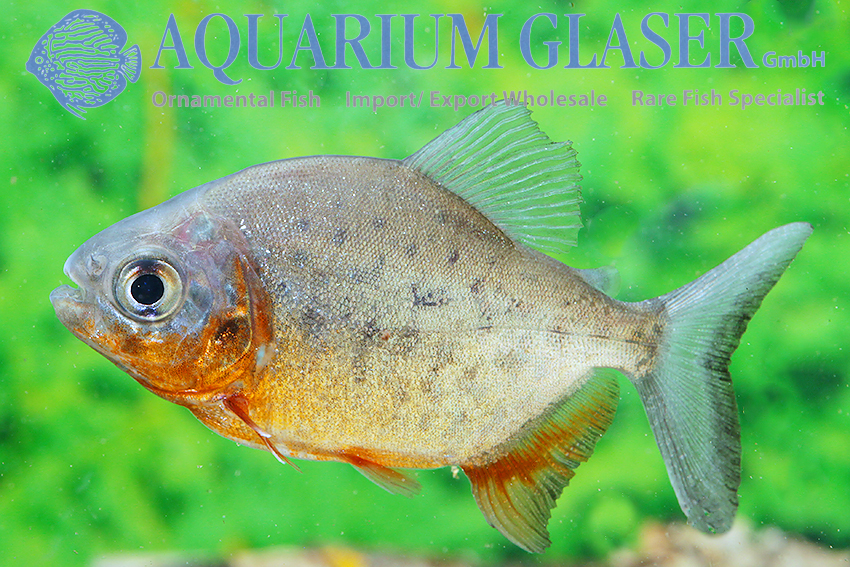
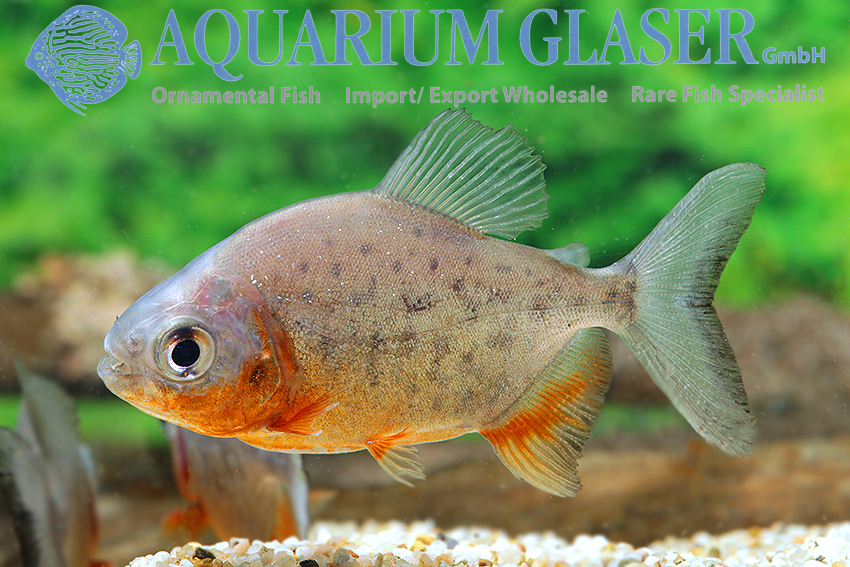
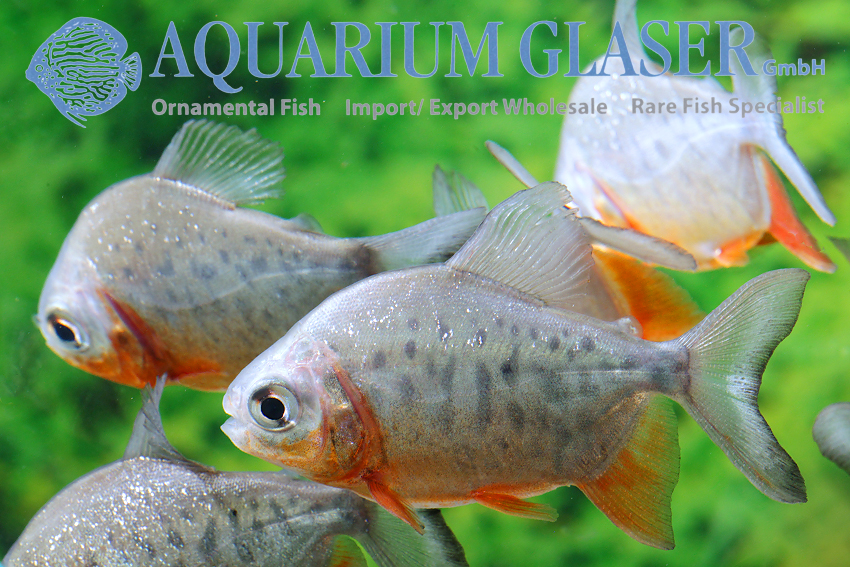
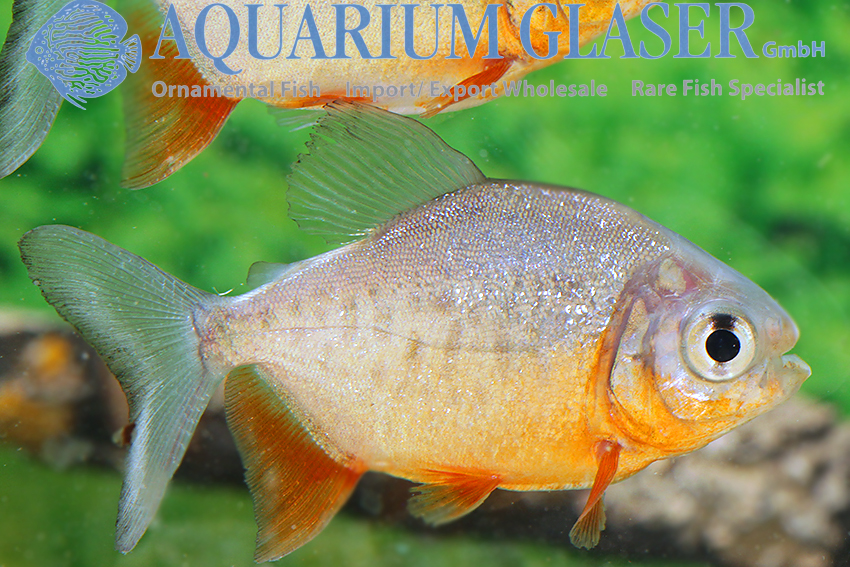
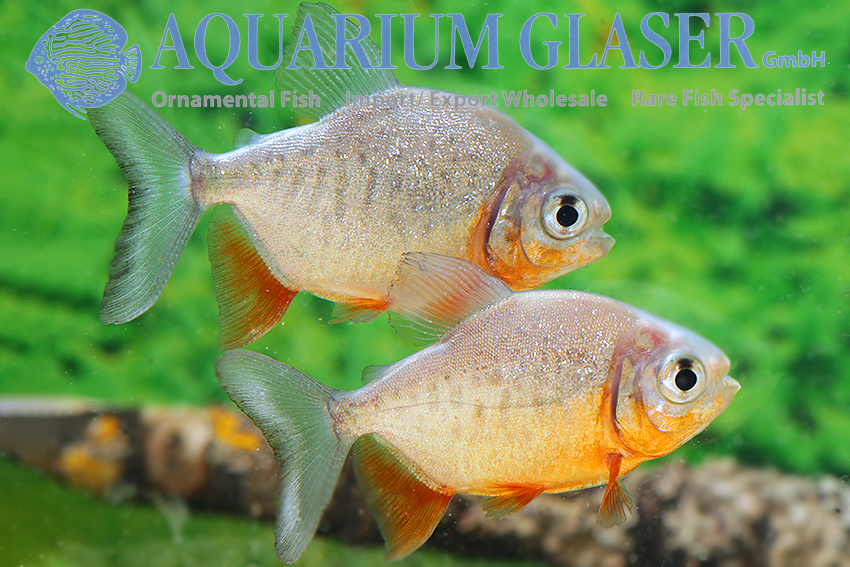
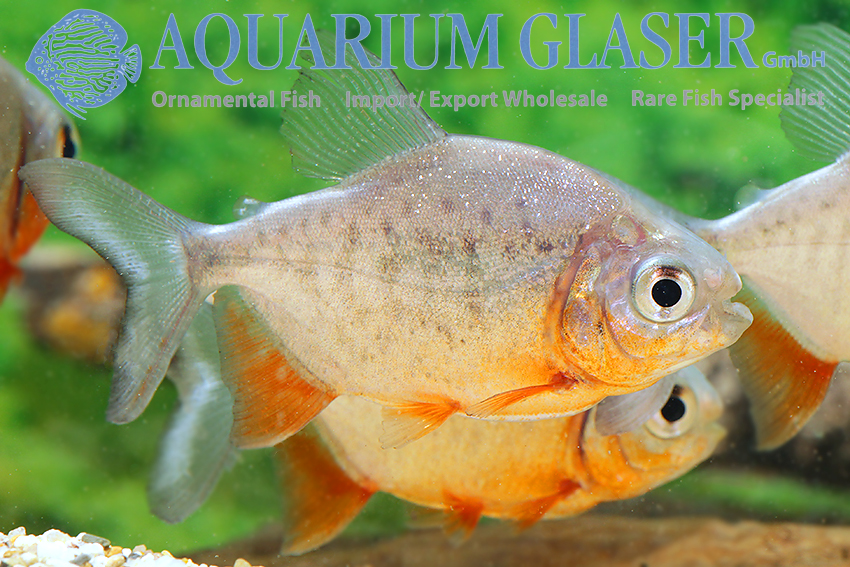
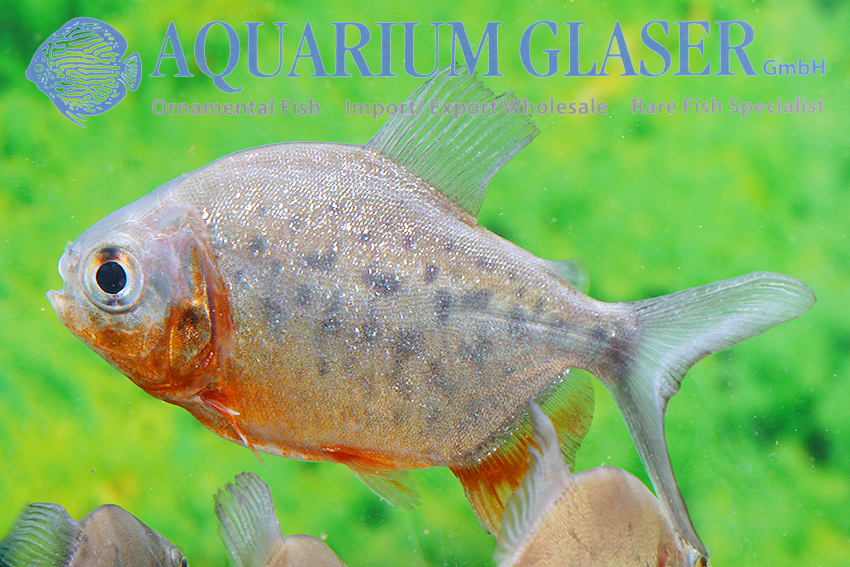
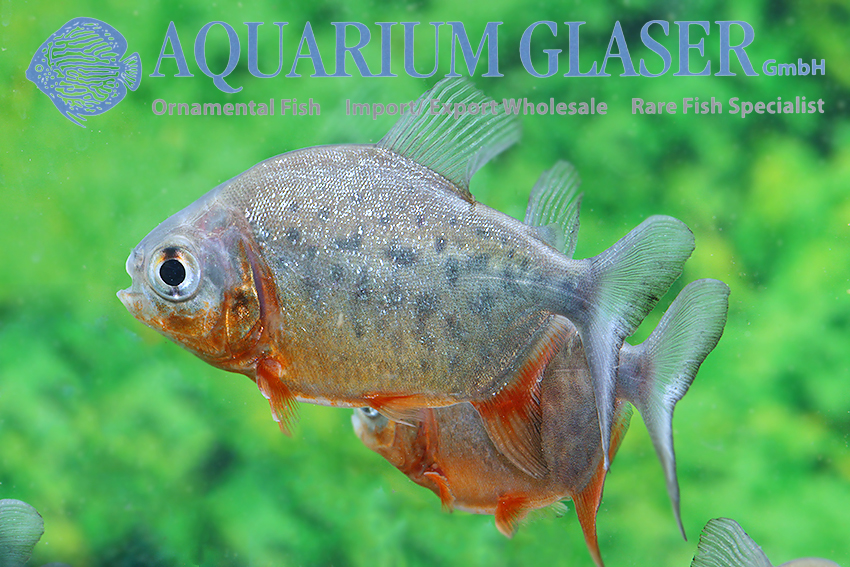
Anyway, red pacus are a must in any display aquarium as they are impressive creatures. However, we do not import them as large fish, but as small fish just a few centimetres long. They are usually bred ones from South-East Asia. As juveniles, red bellied pacus imitate a notorious cousin, the Red Piranha (Pygocentrus nattereri). In fact, they are almost indistinguishable from each other in terms of color. It is called Batesian mimicry when a harmless species imitates a defensive species and thus benefits from the fact that potential predators tend to be cautious.
Aquaristically, of course, it is known that piranhas represent the carnivorous branch of serrasalmids, while pacus are mainly vegetarians. Large animals love to eat fruit and nuts that fall from trees into the water. As this food is very rich in nutrients, the water under such trees is often heavily polluted with putrefactive substances and very low in oxygen. Pacus can withstand this and some species even develop an auxiliary respiratory organ at certain times in the form of a greatly enlarged, very well supplied with blood lip, through which additional oxygen enters the organism when the fish swims on the water surface.
Piaractus brachypomus is relatively unspecialized. It is also found in clean waters and as an opportunist it also eats small fish, shrimps etc., so it is not a pure vegetarian.
Keeping Pacus is easy, but only recommended for people who have huge aquaria. Piaractus brachypomus get on well with each other, but small fish are regarded as food supplements.
For our customers: the animals have code 218501 (4-6 cm) on our stock list. Please note that we only supply the wholesale trade.
Text & photos: Frank Schäfer




